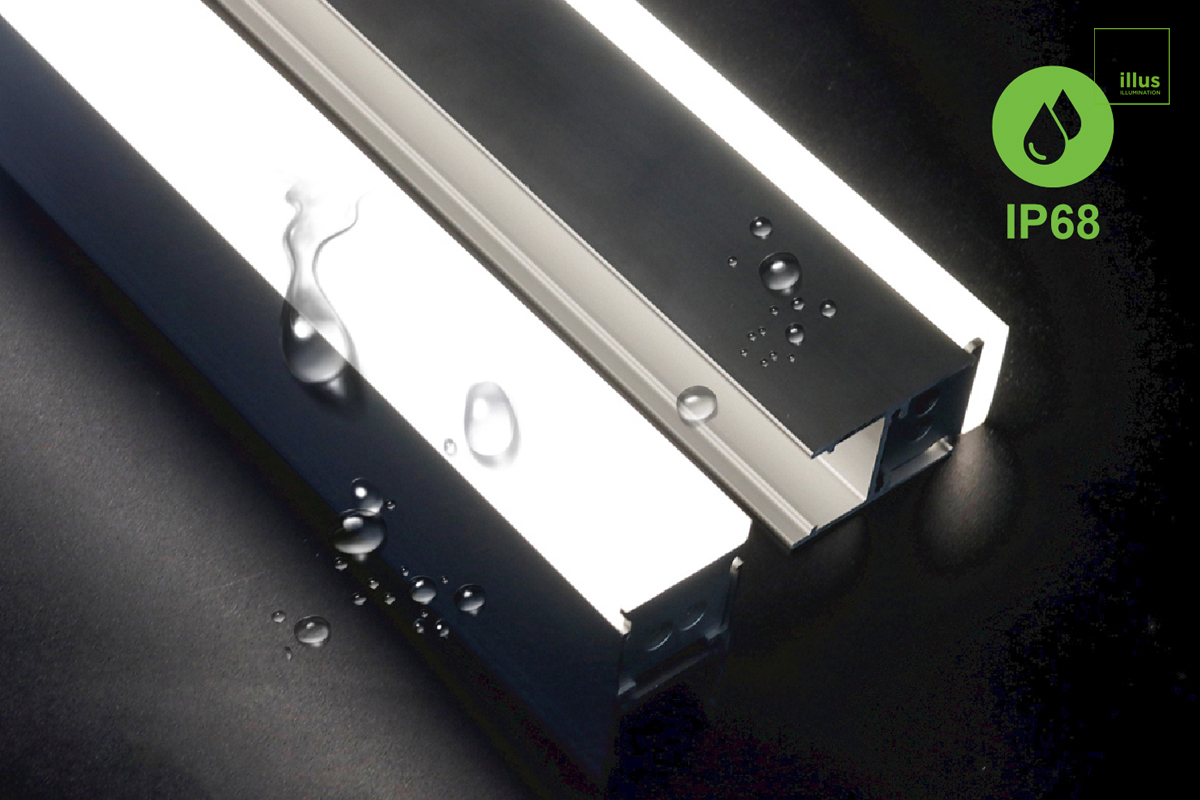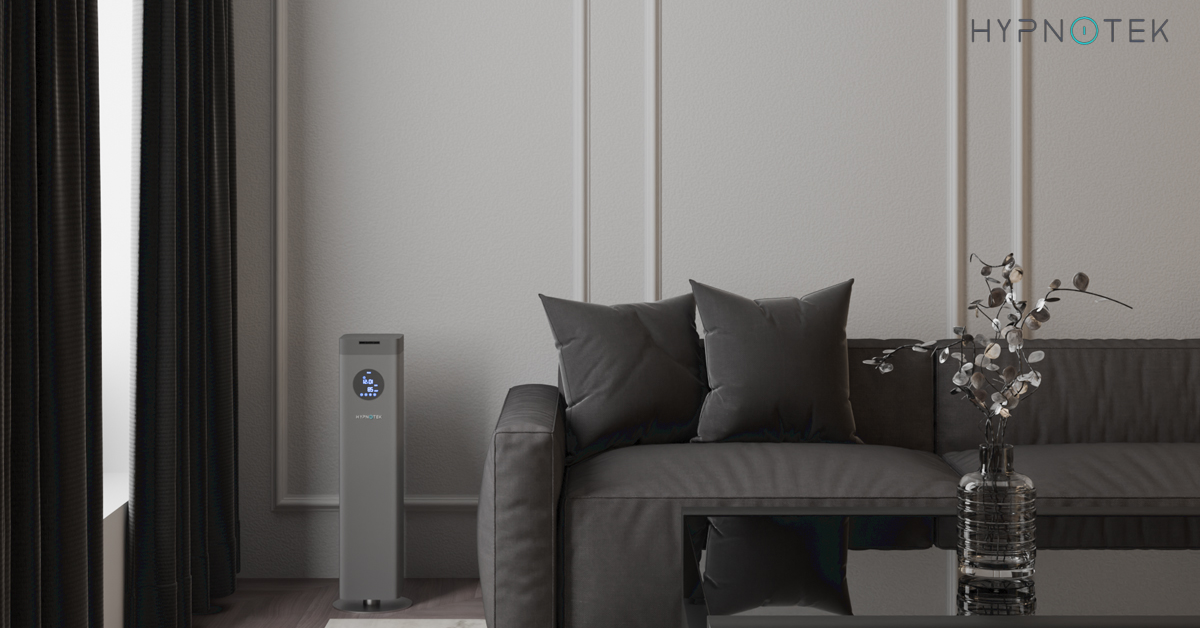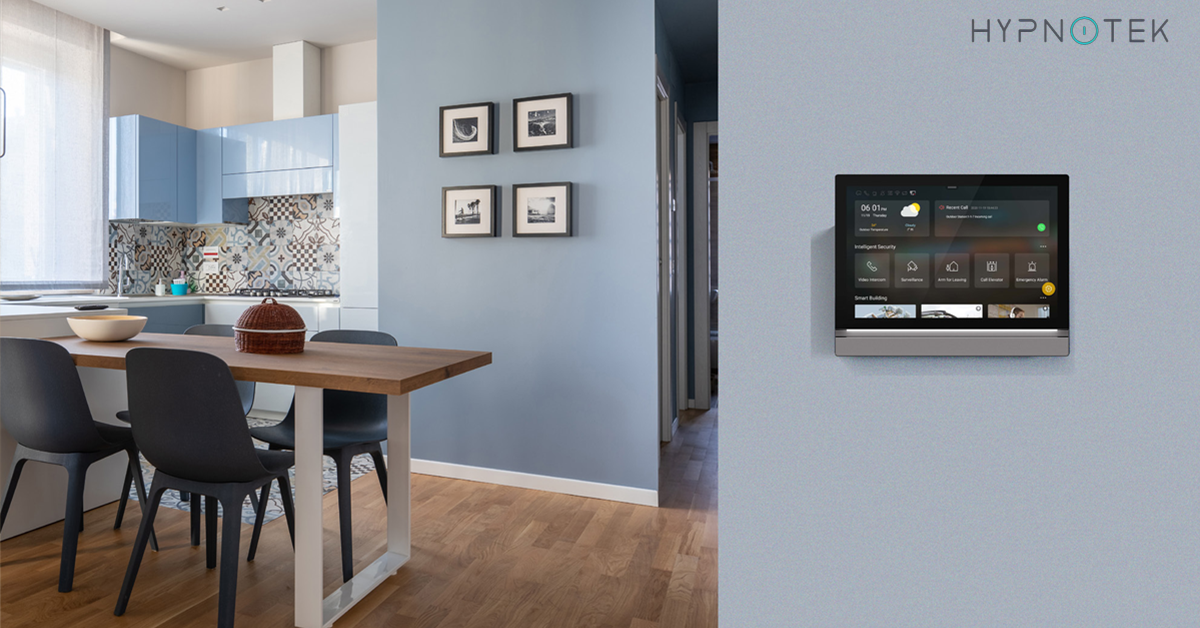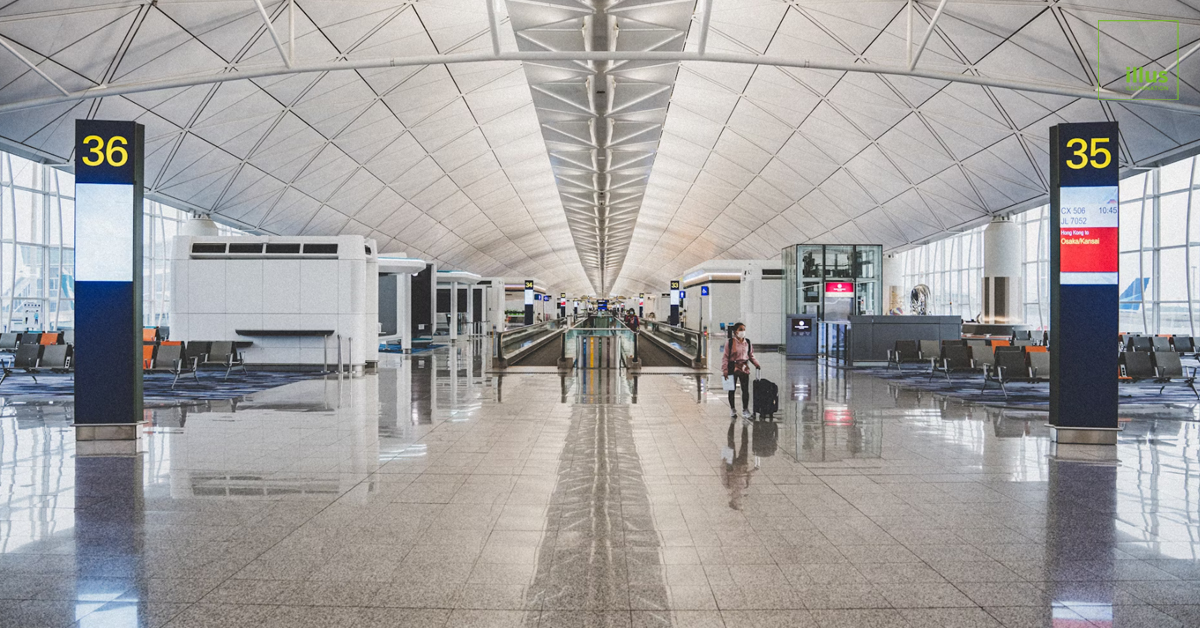Bridge Lighting Design: Enhancing Safety & Aesthetics for Modern Infrastructure
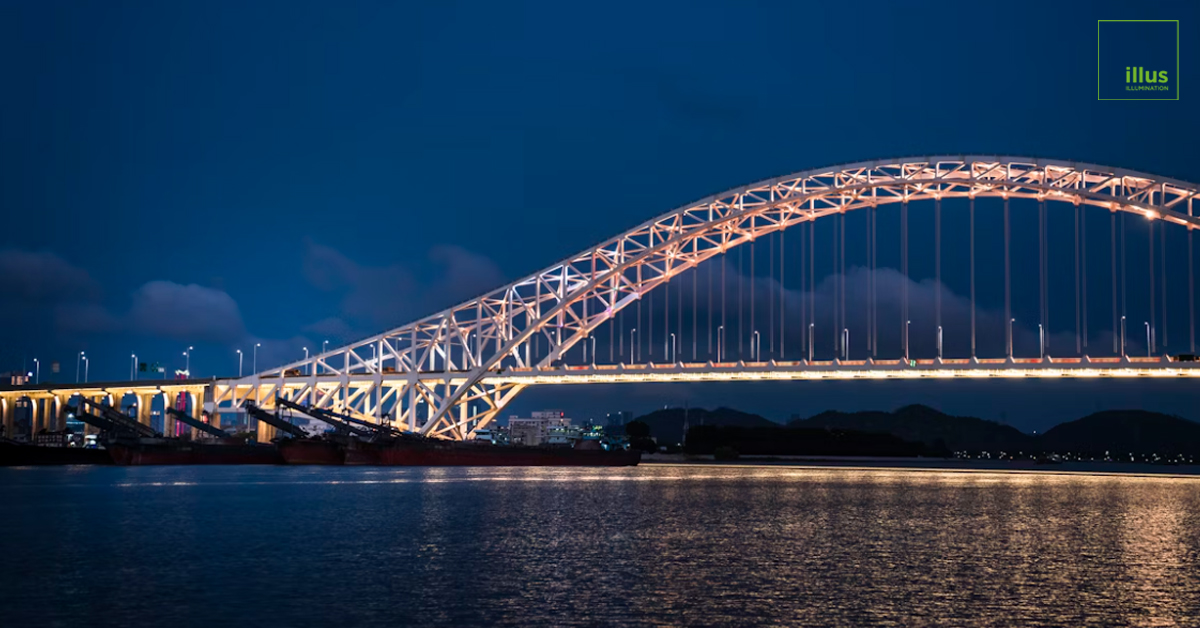
Bridges serve as vital connections within cities and across regions, but they are more than functional structures. The right bridge lighting design transforms these crossings into visual landmarks, improving safety, navigation, and nighttime appeal. As urban planners, architects, and developers increasingly focus on human-centered infrastructure, lighting has become a defining feature of bridge projects worldwide.
The Importance of Bridge Lighting Design
Bridge lighting design plays two critical roles: ensuring safety and creating visual identity. For drivers, cyclists, and pedestrians, proper illumination reduces the risk of accidents by improving visibility and orientation. For cities, a well-designed lighting system enhances the skyline and reflects cultural identity.
When designed with precision, bridge lighting reduces glare, prevents dark spots, and integrates seamlessly with the architectural form. This makes the bridge safer to use while also serving as a focal point for civic pride and tourism. In addition, lighting provides continuity between day and night use, ensuring the bridge remains a functioning and welcoming part of the urban environment 24/7.
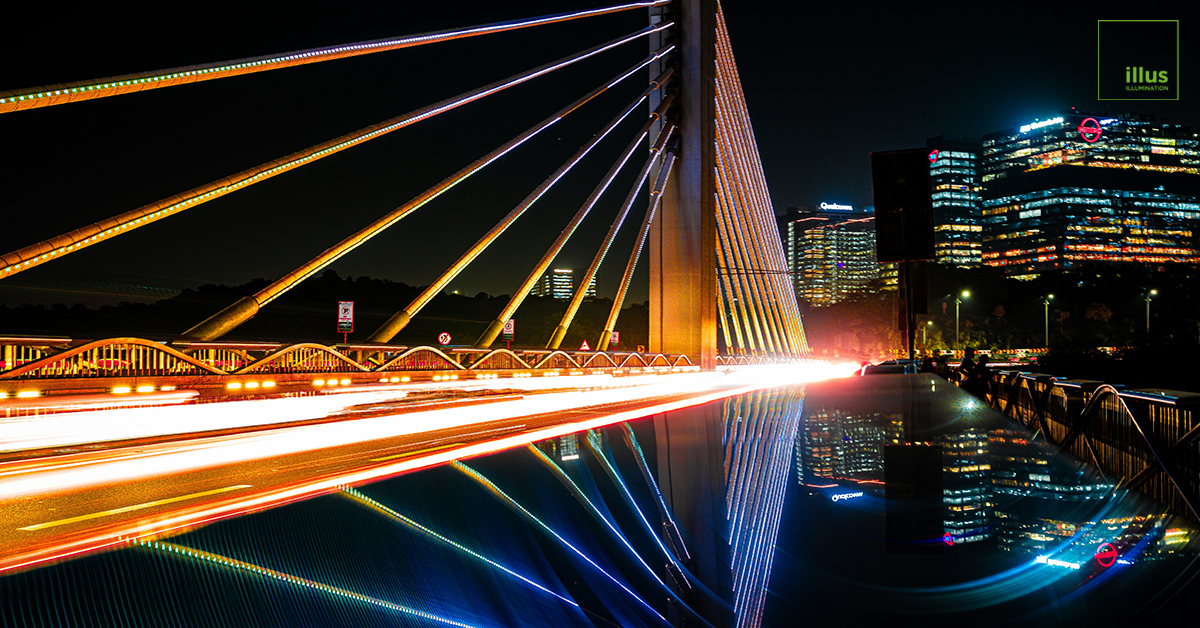
Key Functions of Bridge Lighting
Safety and Navigation
Adequate illumination helps users recognize structural details, road lanes, and potential hazards. Lighting also aids in wayfinding, guiding both local commuters and visitors through unfamiliar routes. In maritime contexts, lighting can also assist in navigation for boats passing underneath, reducing the risks of collisions.
Architectural Expression
Bridges often represent engineering excellence. By highlighting structural elements such as cables, arches, or towers, lighting can showcase the design and craftsmanship. This architectural storytelling adds value to the cityscape, as bridges often become iconic backdrops for photography and media.
Aesthetic Enhancement
Lighting design turns bridges into landmarks after dark. Dynamic color-changing systems and programmable LEDs enable creative expressions for cultural events, holidays, or national celebrations. Beyond celebrations, consistent lighting aesthetics create a recognizable visual identity for the city, reinforcing its brand image.
Environmental Considerations
Sustainable bridge lighting design incorporates energy-efficient LED systems, smart controls, and minimized light pollution. This ensures long-term cost savings and environmental responsibility. More municipalities are requiring that new infrastructure projects adopt eco-conscious lighting practices, making sustainability an essential function rather than an optional feature.
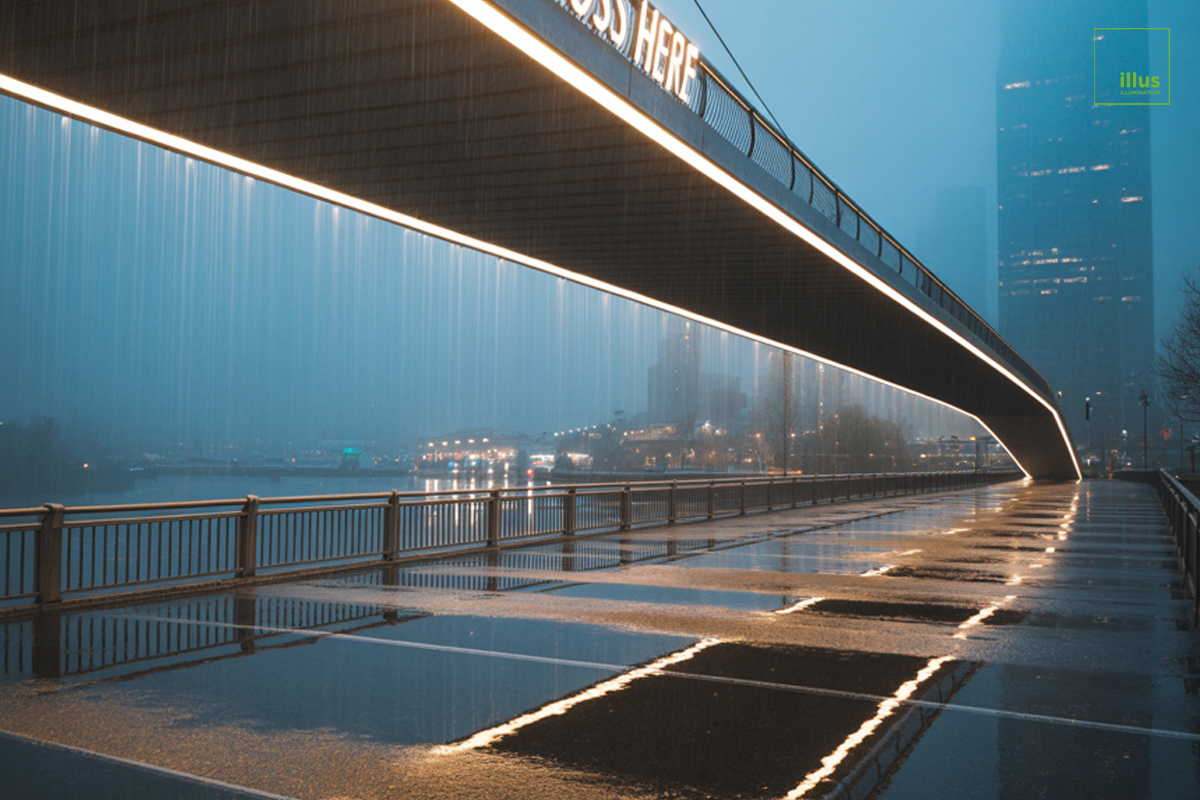
Elements of Effective Bridge Lighting Design
Functional Roadway Lighting
For bridges carrying vehicular traffic, roadway lighting must comply with safety standards while preventing glare for drivers. Fixtures are typically mounted on poles or integrated into the structure for consistent coverage. Careful photometric planning ensures uniform light distribution, eliminating sudden shifts from bright to dark areas that could confuse drivers.
Pedestrian and Bicycle Path Lighting
Many modern bridges feature dedicated paths for walkers and cyclists. Human-centered lighting along these routes prioritizes visibility, comfort, and security, often through low-level fixtures or handrail-integrated solutions. The placement of lighting for pedestrians must balance safety with ambiance, offering enough illumination for security without overwhelming the experience of enjoying the bridge at night.
Architectural Accent Lighting
Accent lighting draws attention to distinctive structural elements. Linear LEDs, floodlights, and in-ground fixtures can highlight pylons, suspensions, or trusses, giving the bridge a unique identity. Accent lighting also offers flexibility, as designers can adjust intensity and beam angles to create different effects for daily use versus special occasions.
Dynamic and Decorative Lighting
Programmable systems allow bridges to change colors and patterns, creating engaging nightscapes. Dynamic lighting is particularly effective for cities aiming to boost tourism and civic branding. Advanced lighting software enables scheduling for different times of the year, ensuring a consistent variety while maintaining energy efficiency.
Under-Bridge and Water Lighting
Illuminating the underside of bridges or the water surface below adds drama and increases the perceived scale of the structure. This approach also enhances safety for boat traffic. Creative underwater lighting can further highlight the bridge’s reflection, producing captivating night views that enhance the surrounding waterfront.
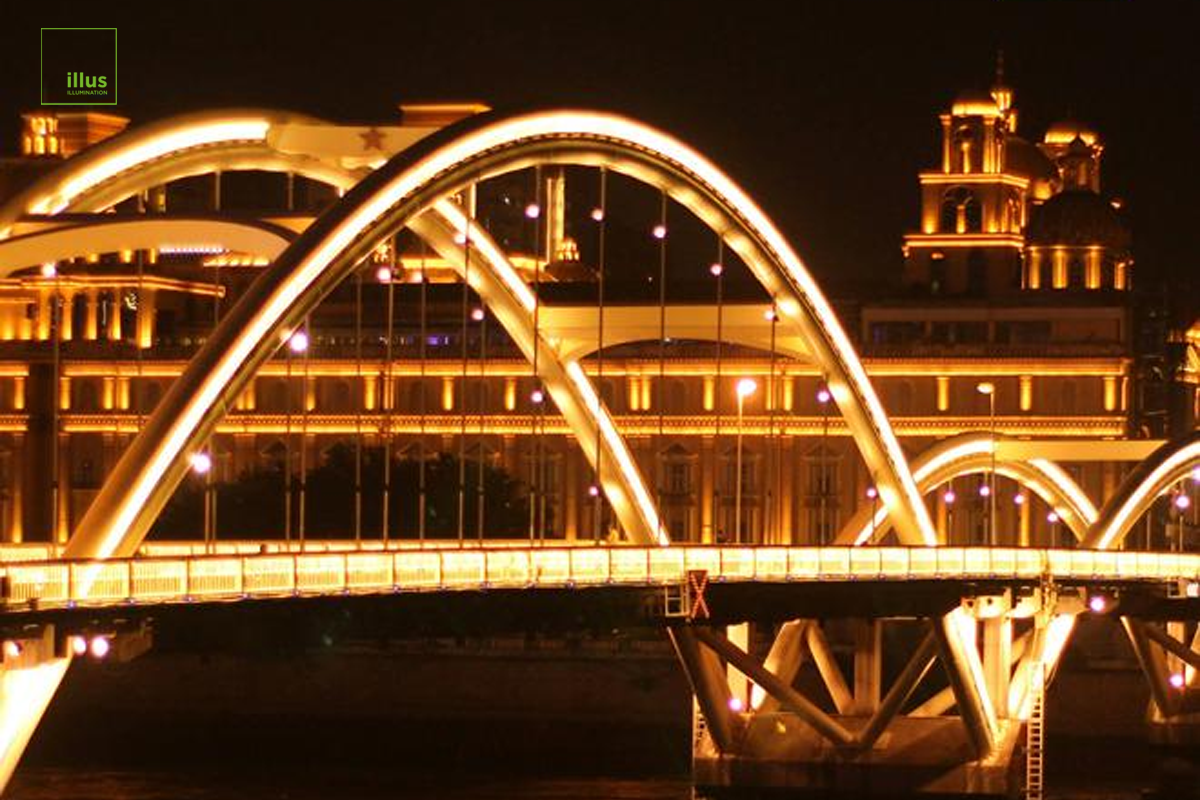
Designing with Human-Centered Principles
Human-centered bridge lighting design emphasizes how people experience the structure. This approach goes beyond technical requirements and considers comfort, perception, and emotional impact.
Visual Comfort: Avoiding excessive brightness or sharp contrasts prevents visual fatigue. The lighting should provide smooth transitions between areas, enabling users to feel secure without overwhelming their vision.
Inclusivity: Well-lit pathways support accessibility for all users, including those with visual impairments. Thoughtful design also considers the needs of children, elderly individuals, and people using mobility aids.
Wayfinding: Thoughtful placement of lights assists with navigation and provides reassurance for pedestrians at night. Subtle cues, such as illuminated railings or marker lights, guide users intuitively without cluttering the visual field.
Emotional Connection: Light has psychological effects, influencing mood and creating a sense of place. A beautifully lit bridge can instill pride and belonging in communities. When a bridge becomes an evening gathering point or a symbol of a city, lighting design has achieved its full potential.
By prioritizing these principles, designers ensure bridges serve not only as transportation links but also as meaningful public spaces that strengthen the urban experience.
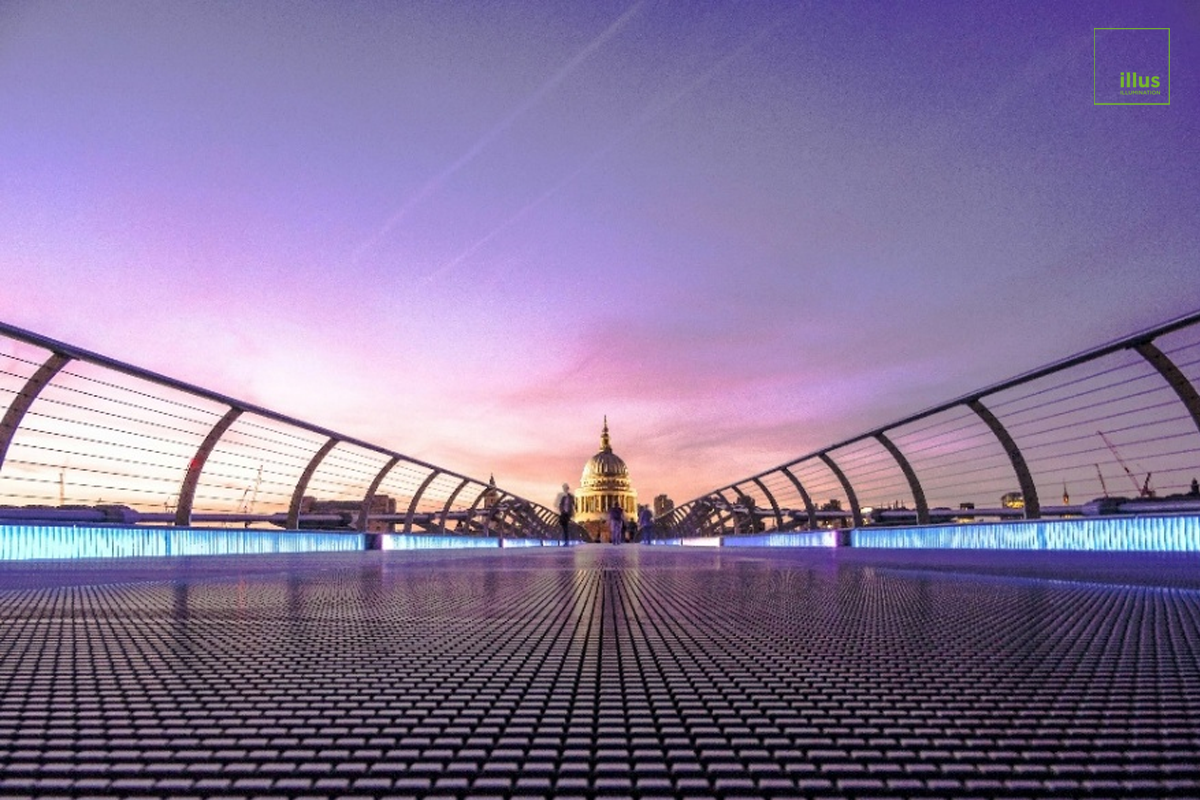
Case Examples of Bridge Lighting Design
- Millennium Bridge, London: Linear LEDs integrated into the handrails provide both functional illumination and subtle architectural emphasis.
- Banpo Bridge, Seoul: Known for its colorful LED fountain show, the bridge doubles as a tourist attraction and public art installation.
- Zakim Bridge, Boston: Tower illumination highlights the cable-stayed structure, making it a distinctive feature of the city skyline.
These examples show how lighting can turn practical structures into celebrated landmarks while improving everyday usability.
Technology Shaping Modern Bridge Lighting
Advancements in lighting technology have expanded the possibilities for bridge design:
- LED Systems: Energy-efficient, durable, and versatile in color and intensity.
- Smart Controls: Remote monitoring and adaptive dimming reduce maintenance and optimize performance.
- IoT Integration: Sensors can adjust lighting based on traffic flow, weather, or time of day.
- Projection and Media Facades: Some bridges now feature video mapping and artistic projections, creating immersive experiences.
These innovations align with sustainable urban development, reducing energy costs and extending the lifecycle of installations.
Sustainability in Bridge Lighting Design
Energy efficiency and environmental stewardship are central to modern infrastructure projects. Sustainable bridge lighting design minimizes energy use without sacrificing aesthetics or safety. Techniques include:
- Using high-performance LED luminaires with long lifespans.
- Employing solar-powered systems in off-grid locations.
- Directing light precisely to reduce skyglow and protect local ecosystems.
- Implementing adaptive lighting that dims during low-traffic periods.
Such practices not only benefit municipalities financially but also contribute to responsible urban growth.
Choosing the Right Bridge Lighting Partner
Successful bridge lighting projects require expertise in engineering, design, and technology. A trusted partner provides:
- Tailored solutions that address functional, aesthetic, and environmental goals.
- Experience in large-scale infrastructure projects.
- Knowledge of international safety and lighting standards.
- End-to-end services, from design and prototyping to installation and after-sales support.
At Illus Lighting, we specialize in creating high-end lighting solutions that balance safety, sustainability, and design excellence. Our team works closely with urban planners, architects, and municipalities to deliver projects that enhance both infrastructure performance and city identity.
Conclusion
Bridge lighting design is more than illumination—it is about creating safer journeys and inspiring cityscapes. By combining human-centered principles with cutting-edge technology, bridges can serve as both functional connectors and architectural icons. As cities evolve, thoughtfully designed lighting will continue to define the character of modern infrastructure and strengthen the connection between people and place.
